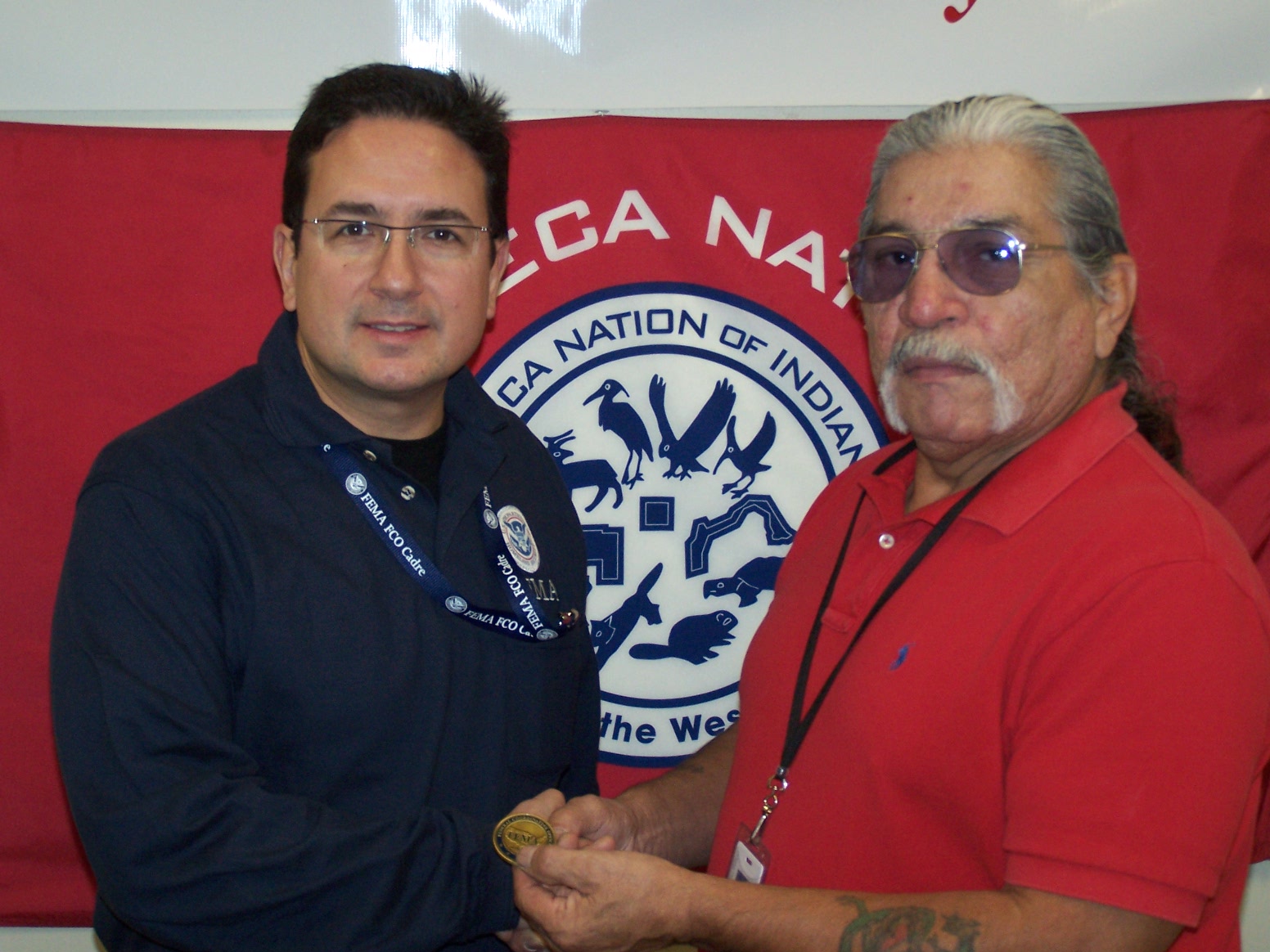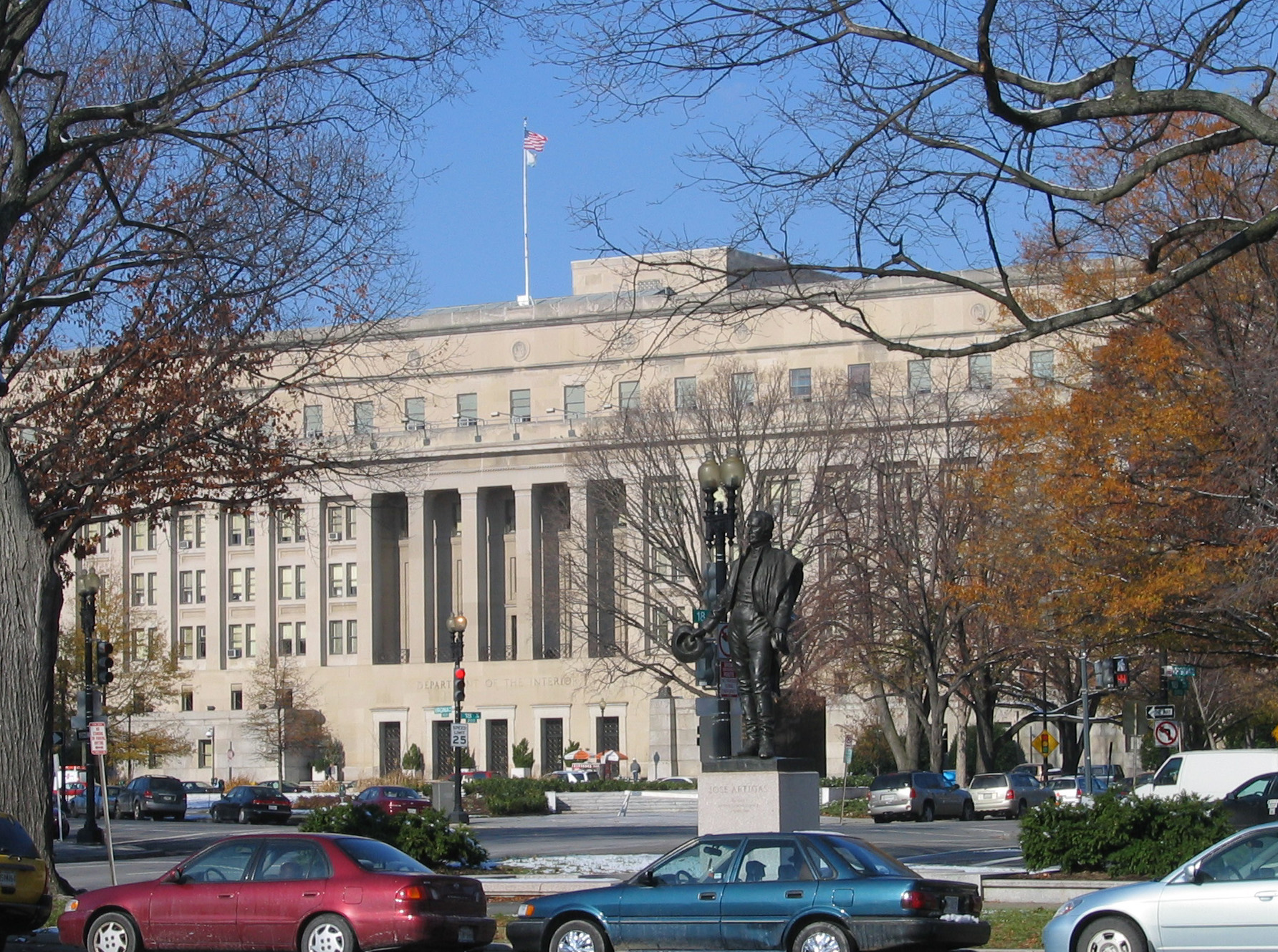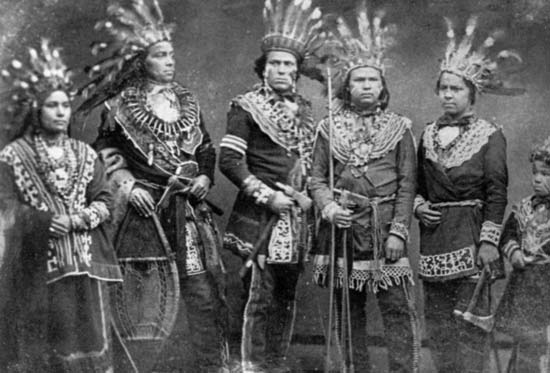|
Pan-Indian
Pan-Indianism is a philosophical and political approach promoting unity, and to some extent cultural homogenization, among different Indigenous groups in the Americas regardless of tribal distinctions and cultural differences. This approach to political organizing is primarily associated with Native Americans organizing for social justice and cultural revitalization in the Continental United States, but has spread to some other Indigenous communities as well, especially in Canada. Inuit and Métis people may consider themselves part of the broader, pan-Aboriginal community, or some variation thereof. Some academics have also used the term pan-Amerindianism to distinguish from other peoples known as "Indians". Some pan-Indian organizations seek to pool the resources of Indigenous groups in order to protect the interests of Native peoples across the world.Waldman, Carl (2009). "Atlas of The North American Indian" (Third ed.), pp 262, 264, 241. Checkmark Books., New York Early h ... [...More Info...] [...Related Items...] OR: [Wikipedia] [Google] [Baidu] |
Society Of American Indians
The Society of American Indians (1911–1923) was the first national American Indian rights organization run by and for American Indians. The Society pioneered twentieth century Pan-Indianism, the movement promoting unity among American Indians regardless of tribal affiliation. The Society was a forum for a new generation of American Indian leaders known as Red Progressives, prominent professionals from the fields of medicine, nursing, law, government, education, anthropology and ministry. They shared the enthusiasm and faith of Progressive Era white reformers in the inevitability of progress through education and governmental action. The Society met at academic institutions, maintained a Washington, D.C. headquarters, conducted annual conferences and published a quarterly journal of American Indian literature by American Indian authors. The Society was one of the first proponents of an "American Indian Day." It was at the forefront of the fight for Indian citizenship and opening ... [...More Info...] [...Related Items...] OR: [Wikipedia] [Google] [Baidu] |
Muscogee (Creek)
The Muscogee, also known as the Mvskoke, Muscogee Creek, and the Muscogee Creek Confederacy ( in the Muscogee language), are a group of related indigenous peoples of the Southeastern Woodlands, indigenous (Native American) peoples of the Southeastern WoodlandsTranscribed documents Sequoyah Research Center and the American Native Press Archives in the United States, United States of America. Their original homelands are in what now comprises southern Tennessee, much of Alabama, western Georgia (U.S. state), Georgia and parts of northern Florida. Most of the Muscogee people were forcibly Indian Removal, removed to Indian Territory (now Oklahoma) by the federal government in the 1830s during the Trail of Tears. A small group of the Muscogee Creek Confederacy remained in Alabama, and t ... [...More Info...] [...Related Items...] OR: [Wikipedia] [Google] [Baidu] |
Indigenous Peoples Of The Americas
The Indigenous peoples of the Americas are the inhabitants of the Americas before the arrival of the European settlers in the 15th century, and the ethnic groups who now identify themselves with those peoples. Many Indigenous peoples of the Americas were traditionally hunter-gatherers and many, especially in the Amazon basin, still are, but many groups practiced aquaculture and agriculture. While some societies depended heavily on agriculture, others practiced a mix of farming, hunting, and gathering. In some regions, the Indigenous peoples created monumental architecture, large-scale organized cities, city-states, chiefdoms, State (polity), states, Realm, kingdoms, republics, Confederation, confederacies, and empires. Some had varying degrees of knowledge of engineering, architecture, mathematics, astronomy, writing, physics, medicine, planting and irrigation, geology, mining, metallurgy, sculpture, and gold smithing. Many parts of the Americas are still populated by Indigeno ... [...More Info...] [...Related Items...] OR: [Wikipedia] [Google] [Baidu] |
Seneca Nation
The Seneca Nation of Indians is a federally recognized Seneca tribe based in western New York. They are one of three federally recognized Seneca entities in the United States, the others being the Tonawanda Band of Seneca (also in western New York) and the Seneca-Cayuga Nation of Oklahoma. Some Seneca also live with other Iroquois peoples on the Six Nations of the Grand River in Ontario. The Seneca Nation has three reservations, two of which are occupied: Cattaraugus Reservation, Allegany Indian Reservation, and the mostly unpopulated Oil Springs Reservation. It has two alternating capitals on the two occupied reservations: Irving at Cattaraugus Reservation, and Jimerson Town near Salamanca on the Allegany Reservation."New York Casinos." ''500 Nations.'' (retrieved 31 May 2010) A fourth territory ''de facto'' governed by ... [...More Info...] [...Related Items...] OR: [Wikipedia] [Google] [Baidu] |
Bureau Of Indian Affairs
The Bureau of Indian Affairs (BIA), also known as Indian Affairs (IA), is a United States federal agency within the Department of the Interior. It is responsible for implementing federal laws and policies related to American Indians and Alaska Natives, and administering and managing over of land held in trust by the U.S. federal government for Indian Tribes. It renders services to roughly 2 million indigenous Americans across 574 federally recognized tribes. The BIA is governed by a director and overseen by the assistant secretary for Indian affairs, who answers to the secretary of the interior. The BIA works with tribal governments to help administer law enforcement and justice; promote development in agriculture, infrastructure, and the economy; enhance tribal governance; manage natural resources; and generally advance the quality of life in tribal communities. Educational services are provided by Bureau of Indian Education—the only other agency under the assistant s ... [...More Info...] [...Related Items...] OR: [Wikipedia] [Google] [Baidu] |
Wounded Knee Incident
The Wounded Knee Occupation, also known as Second Wounded Knee, began on February 27, 1973, when approximately 200 Oglala Lakota (sometimes referred to as Oglala Sioux) and followers of the American Indian Movement (AIM) seized and occupied the town of Wounded Knee, South Dakota, United States, on the Pine Ridge Indian Reservation. The protest followed the failure of an effort of the Oglala Sioux Civil Rights Organization (OSCRO) to impeach tribal president Richard Wilson, whom they accused of corruption and abuse of opponents. Additionally, protesters criticized the United States government's failure to fulfill treaties with Native American people and demanded the reopening of treaty negotiations to hopefully arrive at fair and equitable treatment of Native Americans. Oglala and AIM activists controlled the town for 71 days while the United States Marshals Service, FBI agents, and other law enforcement agencies cordoned off the area. The activists chose the site of the ... [...More Info...] [...Related Items...] OR: [Wikipedia] [Google] [Baidu] |
Russell Means
Russell Charles Means (November 10, 1939 – October 22, 2012) was an Oglala Lakota activist for the rights of Native Americans, libertarian political activist, actor, musician, and writer. He became a prominent member of the American Indian Movement (AIM) after joining the organization in 1968 and helped organize notable events that attracted national and international media coverage. Means was active in international issues of indigenous peoples, including working with groups in Central and South America and with the United Nations for recognition of their rights. He was active in politics at his native Pine Ridge Indian Reservation and at the state and national level. Beginning an acting career in 1992, he appeared on numerous television series and in several films, including ''The Last of the Mohicans'' and ''Pocahontas'' and released his own music CD. Means published his autobiography '' Where White Men Fear to Tread'' in 1995. Early life Means was born on November 10 ... [...More Info...] [...Related Items...] OR: [Wikipedia] [Google] [Baidu] |
Ojibwe
The Ojibwe, Ojibwa, Chippewa, or Saulteaux are an Anishinaabe people in what is currently southern Canada, the northern Midwestern United States, and Northern Plains. According to the U.S. census, in the United States Ojibwe people are one of the largest tribal populations among Native Americans in the United States, Native American peoples. In Canada, they are the second-largest First Nations in Canada, First Nations population, surpassed only by the Cree. They are one of the most numerous Indigenous peoples of the Americas, Indigenous Peoples north of the Rio Grande. The Ojibwe population is approximately 320,000 people, with 170,742 living in the United States , and approximately 160,000 living in Canada. In the United States, there are 77,940 mainline Ojibwe; 76,760 Saulteaux; and 8,770 Mississauga, organized in 125 bands. In Canada, they live from western Quebec to eastern British Columbia. The Ojibwe language is Ojibwe language, Anishinaabemowin, a branch of the Algonquia ... [...More Info...] [...Related Items...] OR: [Wikipedia] [Google] [Baidu] |
Clyde Bellecourt
Clyde Howard Bellecourt (May 8, 1936 – January 11, 2022) was a Native American civil rights organizer. His Ojibwe name is ''Nee-gon-we-way-we-dun'', which means "Thunder Before the Storm". He founded the American Indian Movement (AIM) in Minneapolis, Minnesota, in 1968 with Dennis Banks, Eddie Benton-Banai, and George Mitchell. His elder brother, Vernon Bellecourt, was also active in the movement. Under Bellecourt's leadership, AIM succeeded in raising awareness of tribal issues. AIM shone a light on police harassment in Minneapolis. Bellecourt founded successful "survival schools" in the Twin Cities to help Native American children learn their traditional cultures. In 1972, he initiated the march to Washington, D.C. called the Trail of Broken Treaties, hoping to renegotiate federal-tribal nations' treaties. Non-profit groups he founded are designed to improve economic development for Native Americans. Early life Clyde Bellecourt was the seventh of twelve children born to his ... [...More Info...] [...Related Items...] OR: [Wikipedia] [Google] [Baidu] |
Dennis Banks
Dennis Banks (April 12, 1937, in Ojibwe – October 29, 2017) was a Native American activist, teacher, and author. He was a longtime leader of the American Indian Movement, which he co-founded in Minneapolis, Minnesota in 1968 to represent urban Indians. Early life Born on Leech Lake Indian Reservation in northern Minnesota in 1937, Dennis Banks was also known as ''Nowa Cumig'' (''Naawakamig'' in the Ojibwe Double Vowel System). Banks's mother abandoned him to be raised by grandparents. But, he was separated from that family, too, when he was taken at the age of 5 to live at a federal Indian boarding school, run by the Bureau of Indian Affairs (now the Bureau of Indian Education). Its goals were to "civilize" and educate Native American children in English and mainstream culture, in effect, to assimilate them. Children were prohibited to speak their native languages or practice their traditions. Vocational training was emphasized. Banks ran away often, returning to liv ... [...More Info...] [...Related Items...] OR: [Wikipedia] [Google] [Baidu] |
Minneapolis
Minneapolis () is the largest city in Minnesota, United States, and the county seat of Hennepin County. The city is abundant in water, with list of lakes in Minneapolis, thirteen lakes, wetlands, the Mississippi River, creeks and waterfalls. Minneapolis has its origins in timber and as the grist mill, flour milling capital of the world. It occupies both banks of the Upper Mississippi River, Mississippi River and adjoins Saint Paul, Minnesota, Saint Paul, the state capital of Minnesota. Prior to European settlement, the site of Minneapolis was inhabited by Dakota people. The settlement was founded along Saint Anthony Falls on a section of land north of Fort Snelling, Minnesota, Fort Snelling; its growth is attributed to its proximity to the fort and the falls providing power for industrial activity. , the city has an estimated 425,336 inhabitants. It is the most populous city in the state and the 46th-most-populous city in the United States. Minneapolis, Saint Paul and the su ... [...More Info...] [...Related Items...] OR: [Wikipedia] [Google] [Baidu] |
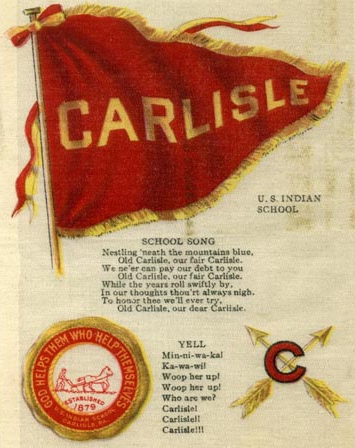
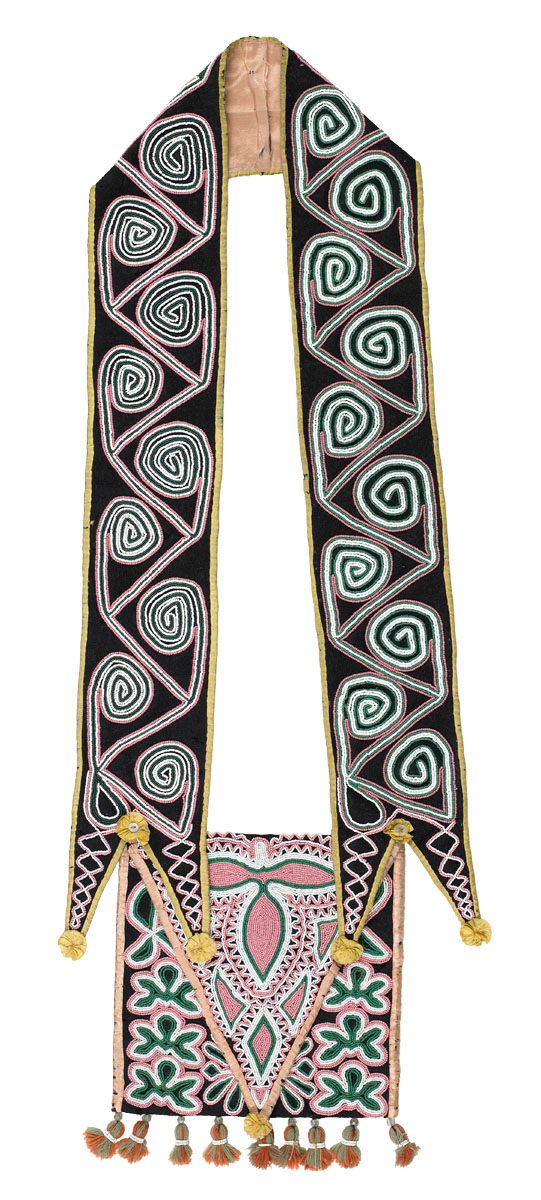
_2007.jpg)
